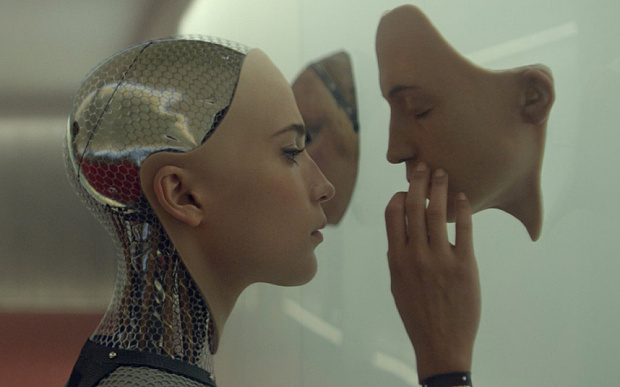
My list of 2015’s best films:
- Ex Machina DVD: Netflix, Redbox. Streaming: Amazon Instant Video, iTunes, Vudu, YouTube, Google Play, Xbox Video.
- Wild Tales (saw at Cinequest). DVD: Netflix; Streaming: Amazon Instant Video, iTunes, Vudu, Xbox Video.
- Leviathan Stream: Amazon Instant Video, iTunes, Vudu, YouTube, Google Play, Flixster.
- Brooklyn
- Me and Earl and the Dying Girl (saw at San Francisco International Film Festival). DVD:Netflix, Redbox; Streaming: Amazon, iTunes, Vudu, YouTube and Google Play.
- Youth
- 45 Years
- Creed
- Spotlight
- Phoenix
- The Martian
- The End of the Tour (saw at San Francisco International Film Festival) Stream: Amazon Instant, Vudu, YouTube and Google Play.
- Love & Mercy DVD: Netflix, Redbox; Streaming: Amazon Instant Video, iTunes, Vudu.
- The Revenant
- The Big Short
- Corn Island (I saw at Cinequest; U.S. release undetermined.)
- Mustang
- I’ll See You in My Dreams Streaming: Amazon Instant Video, iTunes, Vudu, YouTube, Google Play.
- ’71 (saw at Cinequest) DVD: Netflix, Redbox; Streaming: Amazon Instant Video, iTunes, Vudu, YouTube, Google Play; Xbox Video.
- The Look of Silence (saw at San Francisco International Film Festival)
- The Grief of Others (saw at Camera Cinema Club; release undetermined)
So here goes:
Ex Machina: a MUST SEE thinker’s sci-fi

The intensely thought-provoking Ex Machina is a Must See and one of the year’s best films. Set in the present or the very near future, we meet the genius Nathan (played with predatory menace by Oscar Isaac) who developed the worlds top search engine when he was 13 and is now fantastically wealthy. Nathan lives in an extremely remote wilderness with his apparently mute housekeeper Kyoko (Sonoya Mizuno), and brings up one of his smartest software engineers under the pretext of winning a contest for a week with the boss. But Nathan really has brought in the young coder Caleb (Domhnall Gleeson) to test his latest invention – a machine equipped with artificial intelligence.
Specifically, Caleb is tasked with the Turing Test (named after Alan Turing, the subject of The Imitation Game) – he is to converse with the machine to determine whether it’s thinking and behavior is indistinguishable from a human’s. Nathan and Caleb reference that a chess-playing computer may be very efficient, but does it know that it’s playing chess and does it know what chess is? Nathan says that – if he has succeeded – he has the greatest advancement in the history of the world; Caleb rejoins that it would be the greatest invention in the history of gods.
That raises the issue of playing god. If a being – even one that is human-created – is self-aware, conscious and has feelings and its own thoughts, then who has the right to end its life or take away its liberty? And can it seek liberty on its own?
We care about these questions because the machine, named Ava, is so, well, human. Ava is played by Alicia Vikander, an actress with an uncommonly sensitive face. Vikander’s performance is top-notch, and like Caleb, we are soon seduced into liking her and then NEEDING to protect her.
Ex Machina makes so much so-called science fiction pale in comparison, because it really challenges the audience with the moral implications of a real scientific concept. Not everything set in the future is really SCIENCE fiction. Gravity, a superb movie, was basically a survival tale, and Star Wars was a Quest Fantasy and Avatar was basically a remake of the Western A Man Called Horse. Most movies set in the future are just dumb excuses to put a lot of explosions on-screen. The few recent examples of truly thoughtful sci-fi include I Origins and Her.
Ex Machina is both a great-looking movie and a stellar example of economic filmmaking. There essentially only four characters and one set. Computer graphics aren’t used for empty action eye candy, just to allow an actress to credibly play a machine. Nathan’s house/laboratory looks amazing, and the overall art direction and production design is stellar. The stark landscape surrounding Nathan’s hideaway was shot in Norway.
This is the first directing feature for writer-director Alex Garland, and it’s a triumph. He wrote the screenplay for Danny Boyles’ brilliant 28 Days Later, one of my Zombie Movies for People Who Don’t Like Zombie Movies.
WILD TALES: when resentment is not restrained
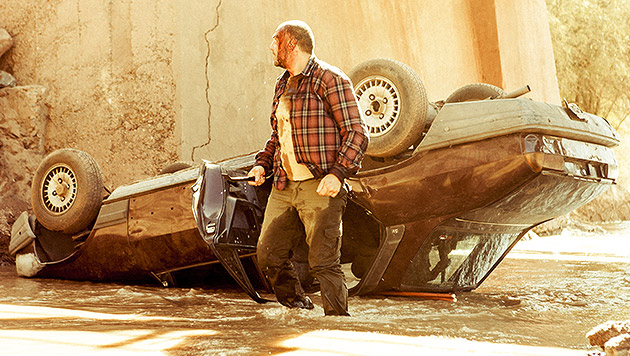
Okay, here’s the first Must See of 2015 – the hilariously dark Argentine comedy Wild Tales. Writer-director Damián Szifron presents a series of individual stories about revenge.
We all feel aggrieved, and Wild Tales explores what happens when rage overcomes the restraints of social order. Think about how instantly angry you can become when some driver cuts you off on the highway – and then how you might fantasize avenging the slight. Indeed, there is story that has the most severe case road rage since Spielberg’s Duel in 1971. Now Wild Tales is dark, and you gotta go with it. The humor comes from the EXTREMES that someone’s resentment can lead to.
One key to the success of Wild Tales is that it is an anthology. In a very wise move, Szifron resisted any impulse to stretch one of the stories into a feature-length movie. Each of the stories is just the right length to extract every laugh and pack a punch. The funniest stories are the opening one set on an airplane and the final one about a wedding.
The acting is uniformly superb. In one story, Oscar Martínez plays a wealthy man in a desperate jam, who buys the help of his shady lawyer fixer (Osmar Núñez) and his longtime household retainer (Germán de Silva) – until their prices get just a little too high. The three actors take what looks like it’s going to a thriller and morph into a (very funny) psychological comedy with a very cynical view of human nature.
One of the middle episodes stars one of my favorite film actors, Ricardo Darín, who I see as the Argentine Joe Mantegna. I suggest that you watch Darín in the brilliant police procedural The Secrets in Their Eyes (on my top ten for 2010), the steamy and seamy Carancho and the wonderful con artist movie Nine Queens.
Wild Tales has been a festival hit (Cannes, Telluride, Toronto and Sundance) around the world and was nominated for the Best Foreign Language Picture Oscar. I saw Wild Tales at Cinequest 2015.
LEVIATHAN: the overwhelming crush of corruption
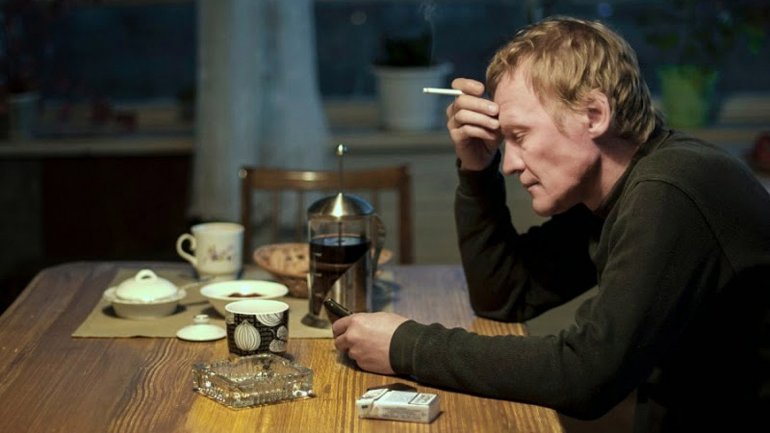
The extraordinary Russian drama Leviathan is a searing indictment of society in post-Soviet Russia – and it’s one of the best movies of the year. A Job-like Everyman struggles to protect his home from the clutches of the town’s corrupt mayor – and he has to battle the corruption that has permeated the political and justice systems. The very struggle takes its toll in his relationships, too, and the audience begins to wonder just how much he’s going to be left with at the end of the story.
Despite being deliberately paced and darkly themed, Leviathan is very watchable. The characters are superbly crafted and the story is filled with “what’s going to happen next?” moments. Writer-director Andrei Zvyagintsev and co-writer Oleg Negin are keen observers of human nature and season Leviathan with plenty of wry humor (e.g., the mayor runs his criminal Sopranos-like enterprise from a desk under a portrait of Putin). And there’s a surprise at the end.
Our Everyman is Kolya (Vladimir Vdovichenkov), who is hotheaded and drinks too much. He fixes cars out of his seafront home in a bleak village on the Barents Sea. His younger second wife Elena Lyadova is cipher. His teenage son (Sergey Pokhodaev) is a good kid, but troubled by the death of his mother. The performances are exceptional, along with that of Roman Madyanov as the corrupt-to-his-marrow mayor. The mayor wants to take Kolya’s property, and their battle plays out in the courts – and in extra-judicial arenas.
And then there’s the vodka abuse. The amount of vodka consumption by virtually every character is astounding. Expect (along with your fellow audience members) to gasp and giggle at the size of the pours.
The film’s only shortcoming is the heavy-handed symbolism employed to hammer home the hopelessness of the protagonist’s struggle, There’s a biblical quote (from Job, of course): “Can you draw out the Leviathan with a fishhook?”, and then shots of whales and of the skeleton of a long-dead beached whale. All this isn’t really necessary, especially with the courtroom scenes, which make the filmmakers’ point exceedingly well.
Andrei Zvyagintsev has solidified his place as one of the masters of world cinema. Leviathan is just his fourth feature, after Elena , which made my Top Ten list for 2012, and The Return, which made my Best Movies of 2004. Elena is available on DVD from Netflix and streaming on Vudu and Xbox Video. The Return is available on DVD from Netflix.
Leviathan was nominated for this year’s Best Foreign Language Picture Oscar, and has been critically acclaimed, currently scoring 92 on Metacritic.com.
ME AND EARL AND THE DYING GIRL: a Must See, perched on the knife edge between comedy and tragedy
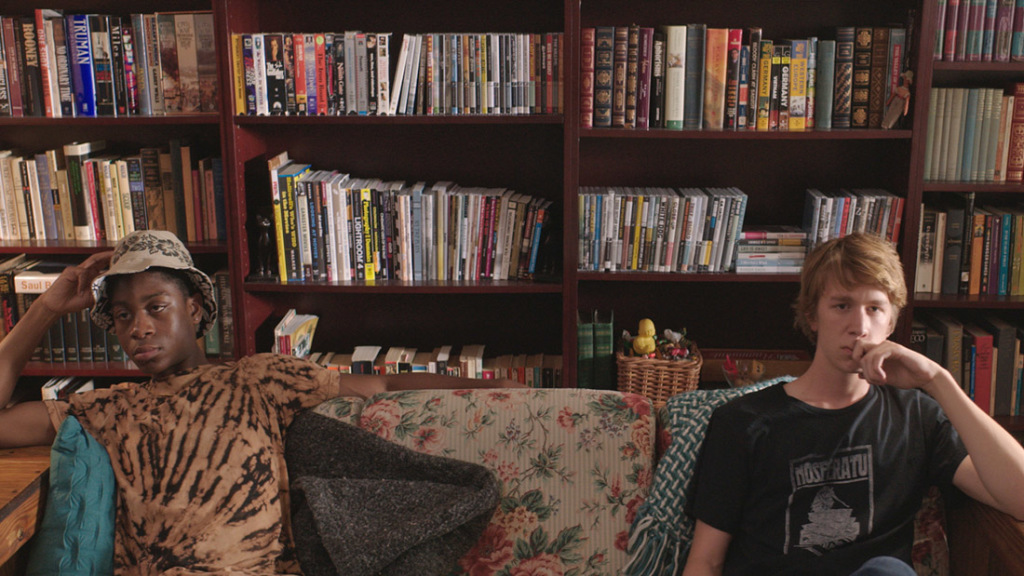
Here’s a MUST SEE – the unforgettable coming of age Me and Earl and the Dying Girl, a brilliant second feature from director Alfonso Gomez-Rejon. The title suggests a weeper (and it is), but 90% of Me and Earl is flat-out hilarious.
Greg (Thomas Mann) is a Pittsburgh teenager who has decided that the best strategy for navigating high school is to foster good relations with every school clique while belonging to none. Embracing the adage “hot girls destroy your life”, he gives the opposite gender a very wide berth. Outwardly genial, Greg is emphatically anti-social in practice, except for his best friend Earl (Ronald Cyler II). But he even refuses to admit that Earl is his friend, describing him “as more of a co-worker”.
Greg’s parents disrupt Greg’s routine by forcing him to visit his classmate Rachel (Olivia Cooke), who has just been diagnosed with leukemia. Rachel doesn’t want any pity, so this is awkward all around until Greg makes Rachel laugh, which draws him back again to visit -and again. A friendship, based on their shared quirky senses of humor, blossoms, but – given her diagnosis – how far can it go?
Rachel is delighted to learn that Greg and Earl shoot their own movies – short knock-offs of iconic cinema classics. She first laughs when she finds that he has remade Rashomon as MonoRash. Their other titles include Death in Tennis, Brew Velvet and A Box of Lips Now.
Why is Me and Earl so successful? Most importantly is that it perches right on the knife-edge between tragedy and comedy, and does so more than any movie I can think of. As funny as it is, we all know that there’s that leukemia thing just under the surface. But, with its originality and resistance to sentimentality, Me and Earl is the farthest thing from a disease-of-the-week movie.
Any movie lover will love all the movie references, as well as Greg and Earl’s many short films. Gomez-Rejon shot these shorts with Super 8, Bolex, digital Bolex and iPhone. Jesse Andrews adapted his own novel, and, as Gomez-Rejon expanded the number of “films within the film”, he called on Andrews to supply him with the new titles – and there are scores of them, right through the ending credits.
Finally, Me and Earl’s art direction is the most singular of any coming of age film. In fact, all the art direction led to the movie’s very satisfying ending; Gomez-Rejon brought in those surprises on the wall at the end – it’s not in the novel.
But Me and Earl and the Dying Girl is at its heart a coming of age story. Sure, the character of Greg is an original, but the life lessons that he must learn are universal.
Thomas Mann is hilarious as Greg; he could be a great comic talent in the making. Cooke and newcomer Cyler are also excellent. Nick Offerman and Connie Britton are perfect as Greg’s well-meaning parents, as is Molly Shannon as Rachel’s needy mom. Jon Bernthal also rocks the role of Mr. McCarthy, another great character we haven’t seen before – a boisterously vital, but grounded history teacher’ Mr. McCarthy lets Greg and Earl spend their lunch hours in his office watching Werner Herzog movies on YouTube. (And Herzog himself reportedly loves the references.)
Alfonso Gomez-Rejon started as a personal assistant to Martin Scorsese and worked his way up to second unit director. With the startling originality of Me and Earl, he’s proved his chops as an auteur.
I saw Me and Earl and the Dying Girl in early May at the San Francisco International Film Festival at a screening with Gomez-Rejon. It also just screened at San Jose’s Camera Cinema Club, another fine choice by Club Director Tim Sika, President of the San Francisco Film Critics Circle. Me and Earl and the Dying Girl is a guaranteed crowd-pleaser and a Must See.
BROOKLYN: Saoirse Ronan brings alive satisfying romantic drama
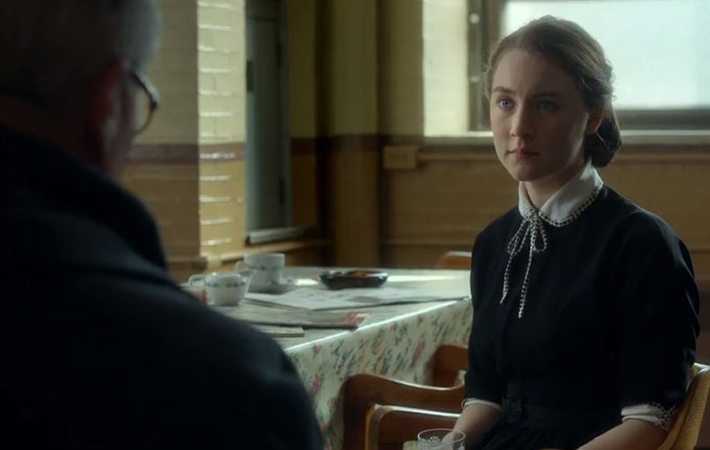
Saoirse Ronan brings alive the satisfying mid-century romantic drama Brooklyn. Ronan plays a very young woman who leaves her Irish small town in 1952 and, after a difficult start, builds a life in Brooklyn. When she must return to Ireland for a visit, things gets complicated. It’s a coming of age story and a romance and a study of the loneliness that comes with immigration.
Ronan’s performance is exquisite. Her character is neither talky nor expressive, yet Ronan conveys her wit and profound feelings in every situation. An uncommon acting talent, Ronan burst on the scene in the pivotal role as the little sister in Atonement, filmed when she was just 12. Since then, she’s made the girl power action flick Hannah and the wry The Grand Budapest Hotel (she was the relentlessly loyal girlfriend with the birthmark of Mexico on her cheek), along with a variety of other films that illustrate her versatility. She will be nominated for Best Actress for this performance in Ronan, which at times rises to the profound.
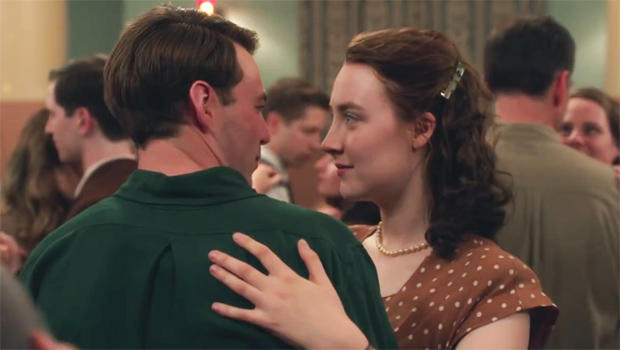
The director John Crowley has done an excellent job here. Brooklyn looks great – watch for the differing color palettes in the Irish and Brooklyn scenes, and it’s remarkably well-paced. Crowley is an excellent story-teller – I loved his early Irish indies Intermission and Boy A (one of my Best Movies of 2008). The Irish scenes in Brooklyn were shot in the real town of Enniscorthy, County Wexford, where the story is set. There’s an especially moving scene with an Irish song – brilliant.
The supporting cast is excellent, especially the always reliable Jim Broadbent. Brid Kelly nails the role of Miss Kelly, a shopkeeper who is remarkably enthusiastic about her own malevolent small-mindedness. If Ronan’s performance weren’t so brilliant, Julie Walters would steal this movie as our heroine’s Brooklyn landlady. Jessica Paré (Mad Men) is also very good (and has Brooklyn’s biggest laugh line). And child actor James DiGiacomo is unforgettable.
With its focus on the protagonist’s relationships with her family members and girlfriends and the question of which suitor she’ll pick, Brooklyn is a “woman’s picture” (not that there’s anything wrong with that). Well-crafted and satisfying, Brooklyn is a safe bet to have wide audience appeal and to earn Ronan an Oscar nod.
CREED: superb refreshing of a storied franchise
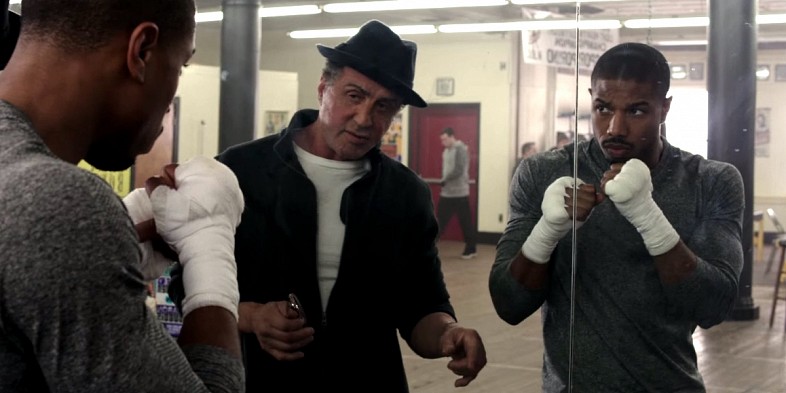
Rocky Balboa returns in writer-director Ryan Coogler’s superb Creed. Creed is the story of a young man, the posthumous son of Rocky’s rival and friend Apollo Creed, who seeks out Rocky as a mentor. Played by Michael B. Jordan (star of Coogler’s Fruitvale Station), the young Creed must face off against his own demons, as imposing as any opponents in the ring. Stallone’s Rocky Balboa is still a lovable galoot, humble and adoring the long-dead Adrian. Tessa Thompson (Dear White People, Selma) plays the younger man’s love interest. Creed isn’t just about The Big Fight – all three of the main characters must overcome a distinct nemesis within each of them.
There’s not that much actual boxing in Creed, and folks who don’t like boxing will still enjoy the movie. The boxing scenes, however, are brilliant. The opponent in the climactic fight is played by real pro boxer Tony Bellew.
The most impressive scene, however, is mid-movie when Rocky’s protegé is tested against a local up-and-comer (the actor Gabe Rosado). The three-minute rounds are photographed as uninterrupted action (no cuts are apparent) from WITHIN the ring. We feel like we’re in the ring with the fighters – right at shoulder-level. It’s a tour de force by veteran cinematographer Maryse Alberti (most of her work has been in documentaries).
Stallone’s performance is excellent. Even though it’s the zillionth time he’s played this character, he’s not just mailing this in for a paycheck, and he’s justifiably getting some award buzz. Johnson and Thompson again prove themselves as rising talents. Phylicia Rashad is excellent as the young fighter’s mother figure.
Coogler is the brilliant young Bay Area filmmaker whose brilliant debut was the indie docudrama Fruitvale Station, which was #8 on my Best Movies of 2013. (Fruitvale Station is available on DVD from Netflix and Redbox and streaming from Amazon, Vudu, Google Play, YouTube and Xbox Video.)
Coogler gets lots of credit for breathing freshness and originality into a movie franchise that had grown tiresome. Creed is an exploration into the internal struggles of three people – and it’s also irresistibly entertaining.
Youth: a glorious cinematic meditation on life
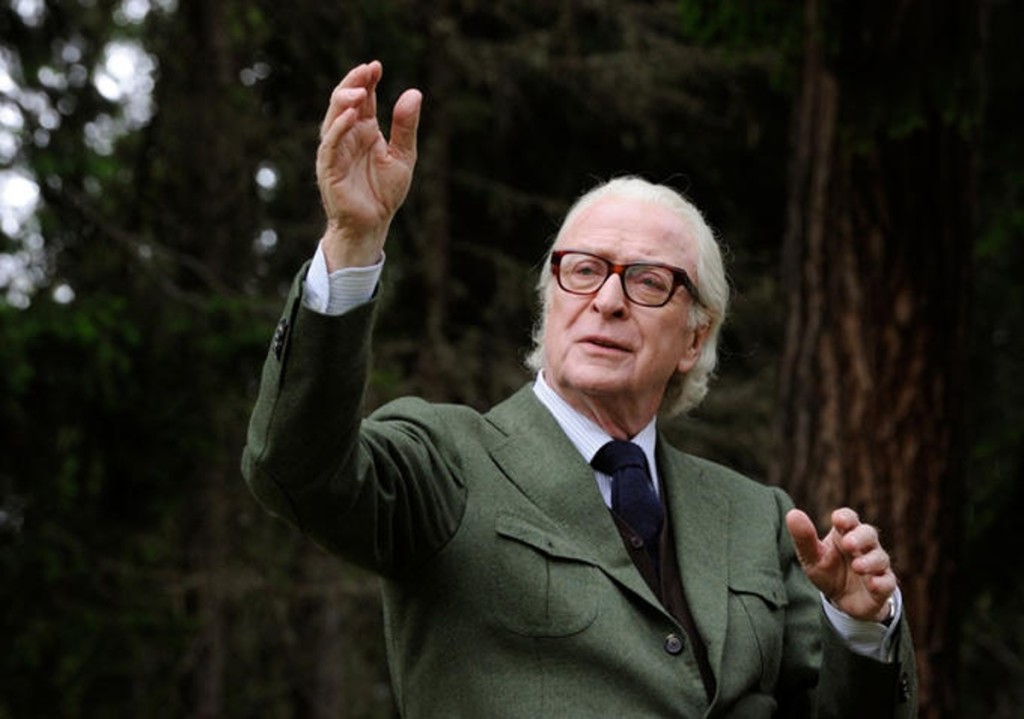
Youth is filmmaker Paolo Sorrentino’s glorious cinematic meditation on life. A resolutely retired composer (Michael Caine) is staying once again at a luxurious spa resort in the Swiss Alps – the kind of place where towels are folded into the figures of swans. Also at the resort are his adult daughter and assistant (Rachel Weisz), an old friend who is a film director (Harvey Keitel), a movie star (Paul Dano) and a host of other characters.
The composer meanders through his daily massages and medical check-ups, and there really isn’t what most of us would think of as a plot. But stuff happens to each of the characters, and the composer and others reflect on their lives – the accomplishments, the disappointments, the betrayals, the intense experiences of love. They contemplate what they remember and what they can’t remember. Ultimately, they consider both life’s deepest meanings and life’s pointlessness. All of this builds and kinda sneaks up on the audience.
Some stories may be best told in the form of novels or short stories or photography or ballet. Sorrentino knows that his story – as was the one in his exquisite The Great Beauty – is best suited for cinema. And Sorrentino takes full advantage of his medium. Youth is a beautiful film to watch – with the spectacular alpine landscapes and the artsy interior shots (some very Felliniesque). The music (as fitting a story about a composer) is entrancing, too; no one left my screening until the music for closing credits had ended and the house lights came back up. There are several dream (and daydream) sequences which are close to genius.
There’s a lot of wry humor in Youth – a silent couple (who have some surprises ready for the audience), an obese South American (Roly Serrano) who resembles Diego Maradona, a forlorn young escort, the pop star Paloma Faith as a vulgar version of herself and a punctiliously insistent emissary from the Queen. And then there’s Jane Fonda as an aging movie queen in grotesque makeup.
Caine, Keitel, Weisz and Dano each have wonderfully moving monologues. I also very much enjoyed the mountaineering instructor (Robert Seethaler) and the braces-wearing masseuse (Luna Mijovic).
Those who need their movies linear and tightly resolved might look elsewhere. But Youth looks great, sounds great and is superbly acted. If you settle in and let it envelop you, you won’t regret it. I’m still thinking about Youth several days after seeing it.
SPOTLIGHT: edge of your seat drama
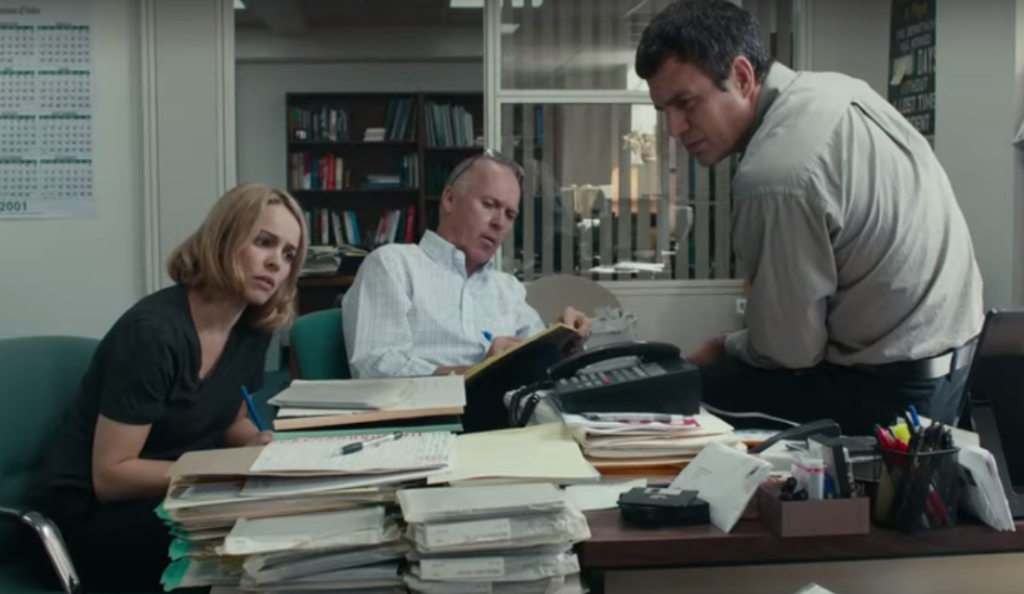
Bolstered with some superb supporting performances, filmmaker Tom McCarthy turns a journalistic procedural into the riveting. edge-of-your-seat-drama Spotlight. The story centers on a team of Boston Globe investigative reporters (Michael Keaton, Rachel McAdams, Mark Ruffalo, Brian d’Arcy James, John Slattery and LievSchrieiber) as they untangle the sex abuse scandal in the Boston Archdiocese. Starting with the already-known Father Geoghan case, they uncover sexual abuse by two Boston priests, then four, then thirteen and soon an unthinkable magnitude, all intentionally covered up by the Church. Reminiscent of All the President’s Men, the team’s shoe leather efforts nets the Big Story.
We already are familiar with the horrible and disgusting revelations. But writer-director Tom McCarthy builds suspense and keeps us totally engaged in this brilliantly paced movie. McCarthy also wrote and directed the brilliant, character-driven fictional films The Visitor and The Station Agent.
Michael Keaton, coming off his tour de force in Birdman, is especially good here, especially in a reflective scene near the end. McAdams and Schreiber are also solid. Ruffalo has the most showy part, as a frenetic and volatile reporter.
But this most compelling acting comes from several of the supporting players, especially Michael Cyril Creighton, Jimmy LeBlanc and Anthony Paolucci as survivors of sexual abuse. The ever-reliable Jamey Sheridan is superb as a diocesan lawyer. Richard O’Rourke is affecting as an addled pedophile priest. Paul Guilfoyle, so convincing as true blue guys in CSI and Primary Colors, gets to play convincingly smarmy here. I don’t see Richard Jenkins in the credits, but the voice of an expert psychotherapist sure sounds like him.
At the end, McCarthy uses epilogue titles to effectively show the extent of the horrors revealed.
All in all, Spotlight is the first top rate movie of the Fall.
PHOENIX: riveting psychodrama, wowzer ending
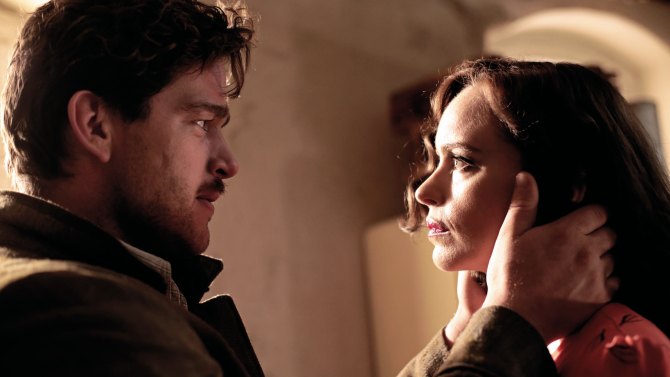
In the German psychological drama Phoenix, Nina Hoss plays Nelly, an Auschwitz survivor whose face has been destroyed by a Nazi gunshot; her sister has arranged for plastic surgery to reconstruct her face. When Nelly gets her new face, we accompany her on an intense quest.
Writer-director Christian Petzhold is an economical story-teller, respectful of the audience’s intelligence. Watching a border guard’s reaction to her disfigurement and hearing snippets from the sister and the plastic surgeon, we gradually piece together her back story. The doctor asks what seems like a very good question – Why would a Jewish woman successfully rooted in London return to Germany in 1938? The answer to that question involves a Woman Loving Too Much.
The sister plans to re-settle both of them in Israel, but Nelly is obsessed with finding her husband. She does find her husband, who firmly believes that Nelly is dead. But he notes that the post-surgery Nelly resembles his pre-war wife, and he has a reason to have her impersonate the real Nelly. So he has the real Nelly (who he doesn’t think IS the real Nelly) pretending to be herself. It’s kind of a reverse version of The Return of Martin Guerre.
It’s the ultimate masquerade. How would you feel while listening to your spouse describe you in detail to a stranger?
Nina Hoss is an uncommonly gifted actress. Here she acts with her face fully bandaged for the first third of the film. We ache for her Nelly’s obsessive need for her husband – and when she finally finds him, but she still doesn’t really have him.
As the husband, Ronald Zehfeld shows us the magnetism that attracts Nina, along with the brusque purposefulness that he thinks he needs to survive and flourish in the post-war Germany.
Christian Petzold and Nina Hoss collaborated on the recent film Barbara (he won the Berlin Film Festival’s Silver Bear for his work). About Barbara, I wrote
“Given that’s it difficult to imagine how anyone else could have improved Barbara, I’ll be looking for Petzold’s next movie.”
Well, here it is, and it’s gripping.
The ending of the film is both surprising and satisfying. Several people in my audience let out an audible “Wow!” at the same time.
THE MARTIAN: an entertaining Must See
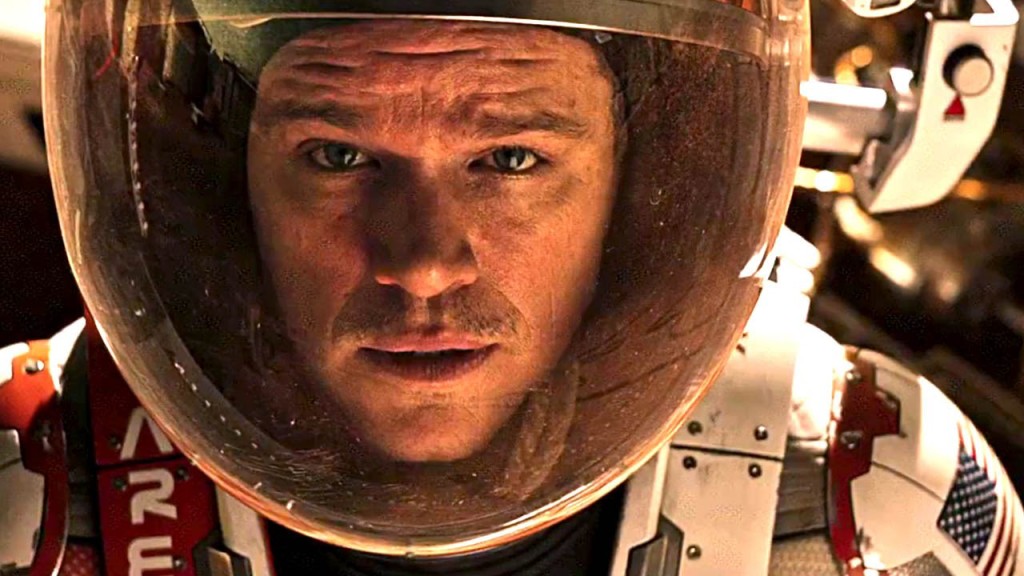
The space adventure The Martian delivers what the best big Hollywood movies can offer – a great looking movie that convincingly takes us to a place we’ve never been, inhabited by our favorite movie stars at their most appealing.
In The Martian, Matt Damon plays Mark Watney, a member of a scientific expedition to Mars who is (understandingly) left for dead when his team must make an emergency escape from the Red Planet. The next manned mission to Mars is scheduled to land four years later 1000 miles away and he only has a four months supply of food, so his chances don’t look promising. But Mark Watney is a character of irrepressible resilience, with a wicked sense of humor, and he immediately embarks on solving the many individual problems that stand between him and survival. NASA leadership (Jeff Daniels, Chiwetel Ejiofor, Kristen Wiig, Sean Bean and more) and his team en route back to Earth (Jessica Chastain, Kate Mara, Michael Pena) all try to help.
Directed masterfully by Ridley Scott, The Martian pops along and there’s never a dull moment. It helps that the character of Watney is very funny.
I’m not highly scientifically literate, but the science in The Martian seemed to be at least internally consistent. I do think that – in real life – the NASA team would have immediately come to the solution thought up in the movie by the geek in the Jet Propulsion Lab.
The awesomely desolate Marscapes are fantastic. It’s all CGI, but you can’t tell – it looks like it is shot on location.
Here’s why The Martian isn’t a great movie:
- Other than Damon’s Mark Watney, the other characters are types, getting all of their authentic texture from the performances instead of from the writing.
- Never for a moment does the audience think there’s any chance that The Martian is really going to kill off Matt Damon.
But, overall, The Martian is so entertaining, it’s a Must See – even for folks that usually pass on science fiction.
THE END OF THE TOUR: the smartest road trip ever
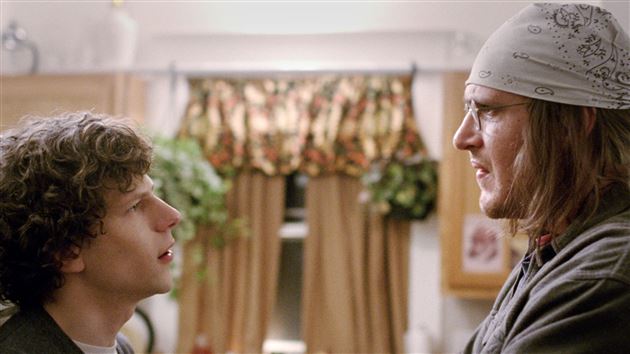
The brilliantly witty and insightful road trip movie The End of the Tour isn’t great because of what happens on the road – it’s great because we drill into two fascinating characters and see how their relationship evolves (or doesn’t evolve). Leads Jason Segel and Jesse Eisenberg are both Oscar-worthy.
In 1996, David Lipsky (Jesse Eisenberg) is a novelist of modest success, having deeply embraced the New York City writer’s scene, and is supporting himself as a journalist for Rolling Stone Magazine. Suddenly- and out of nowhere – David Foster Wallace (Jason Segel) explodes on the scene with his masterpiece Infinite Jest and is immediately recognized as a literary genius. Lipsky is confounded by Wallace’s meteoric rise – and jealous and resentful, too.
Lipsky arranges to accompany Wallace on the last few stops of his book tour and record their conversations, so Lipsky can write a profile of Wallace for Rolling Stone. It’s clear that Lipsky plans to write a sensationalistic celebrity take down – and Wallace is so odd that there’s plenty of ammunition.
All of this REALLY HAPPENED. Years later, after Wallace’s death, Lipsky wrote a memoir of the encounters, on which the movie is based. Eisenberg and Segel got to listen to the tapes of the actual conversations between the two.
The End of the Tour is a battle of wits between two very smart but contrasting guys. Wallace is new to fame, very personally awkward, not at all confident and gloriously goofy; he seems to be an innocent, but he’s VERY smart and not entirely naive. Lipsky is all Chip On the Shoulder as he probes for Wallace’s weaknesses. As different as they are, the two are competitive and snap back and forth, verbally jousting for the entire trip. At one point, Lipsky accuses Wallace of pretending to be not as smart as he is as a “social strategy”.
As funny as is their repartee, it becomes clear that Wallace is inwardly troubled, and clinging to functionality by his fingernails. Wallace gets more confident and begins to trust Lipsky, but Lipsky is still predatory, glimpsing into Wallace’s medicine cabinet and chatting up an old flame of Wallace’s. Still, the intimacy of a road trip forces them to share experiences, which COULD become the basis for a bond.
They even share moments of friendship. But will they become friends? Is there real reciprocity between them?
Who has the power here? Wallace has the power of celebrity, and dominates Lipsky’s chosen vocation. Lipsky has the power to destroy and humiliate Wallace. Ultimately, as we see in the movie, the person who NEEDS the most will cede the power in the relationship.
Director James Ponsoldt has succeeded in making a brilliantly entertaining drama about two smart guys talking. There’s never a slow moment. We’re constantly wondering what is gonna happen. Ponsoldt has already made two movies that I love – Smashed and The Spectacular Now. No one else has made conversation so compelling since the My Dinner with Andre, and The End of the Tour is much more accessible and fun than that 80s art house hit.
Ponsoldt fills the movie with sublime moments. In one scene, we see the two watching a movie with two female companions. In the darkened theater, two characters are focused on the screen and two are gazing at others. It’s a shot of a couple of seconds, nothing happens, and there’s no dialogue – but the moment is almost a short story in and of itself.
For a true-life drama, The End of the Tour is very funny. The humor stems from situations (the two rhapsodize on Alanis Morisette, of all people), behavior (Wallace’s peculiarities and Lipsky’s limitless snoopiness) and the very witty dialogue. There’s a classic moment when Lipsky has Wallace talk on the phone to Lipsky’s wife (Anna Chlumsky) and is very uncomfortable with the results.
What is the funniest line in the movie? Who wins the battle of wits? And what’s their relationship at the end? Those questions propel the audience along the smartest road trip movie ever – The End of the Tour.
LOVE & MERCY: a tale of three monsters and salvation

Love & Mercy, the emotionally powerful biopic of the Beach Boys’ Brian Wilson, is the true life story of an extraordinarily gifted person facing three monsters. Wilson is a musical genius, one of the great songwriting, arranging and producing talents of his century. But his art and his very survival were tested by his tormentors until unselfish love found him an escape to treatment, and, ultimately, his salvation.
In his first feature as a director, veteran producer Bill Pohlad chose to depict two phases of Wilson’s life, with Wilson played by Paul Dano and John Cusack.
The first monster is Wilson’s father Murry (Bill Camp), an abusive father whose adult sons still fear after they have fired him as their manager. What kind of father needs to belittle and sabotage his sons so he doesn’t have to acknowledge that their success surpasses his own? Brian Wilson is deaf in one ear from his father’s punches, but the psychological scars are even more deeply felt.
The second monster is Brian’s own schizoid affective disorder, a condition causing auditory hallucinations. Brilliantly, Pohlad has chosen to let the audience hear what Brian hears. This can be thrilling in moments of musical inspiration. And, of course, it is terrifying most of the time.
The third monster is charlatan psychologist Dr. Eugene Landy (Paul Giamatti), a Svengali-like manipulator, who over-medicates Brian, then confines him, while controlling and watching his every move. Landy leeches off Brian’s fortune and is ruthlessly protective of his racket.
Murry and Landy are so scary that Beach Boy Mike Love, known to be (and portrayed here as) a colossal jerk, almost seems sympathetic by comparison.
In the younger Dano segments, we see Brian at his creative peak, emotionally tortured by Murry and about to be driven into a breakdown by his condition. In the middle-aged Cusack parts, we see Brian, broken down by his illness, utterly helpless against and captive to Landy’s web of control.
Dano shows us Brian’s vulnerable genius. Cusack shows us Brian as gentle and genuine. The story of Love & Mercy is about how he escapes being under the thumb of his monsters, chiefly from the perspective of Melinda Ledbetter (Elizabeth Banks), the woman who would become his second wife. As good as are Dano and Cusack, Banks is absolutely stellar; her character must continually react to the unpredictability of Brian’s illness and the increasing horror of Landy’s tyranny.
From the beginning, Love & Mercy sweeps us up into the highs and lows of Brian Wilson’s life – and it’s a helluva life. Watch the end credits all the way to the end.
Love & Mercy is available on DVD from Netflix and Redbox and streaming from Amazon Instant Video, iTunes and Vudu.
THE BIG SHORT: we laugh and then we get mad
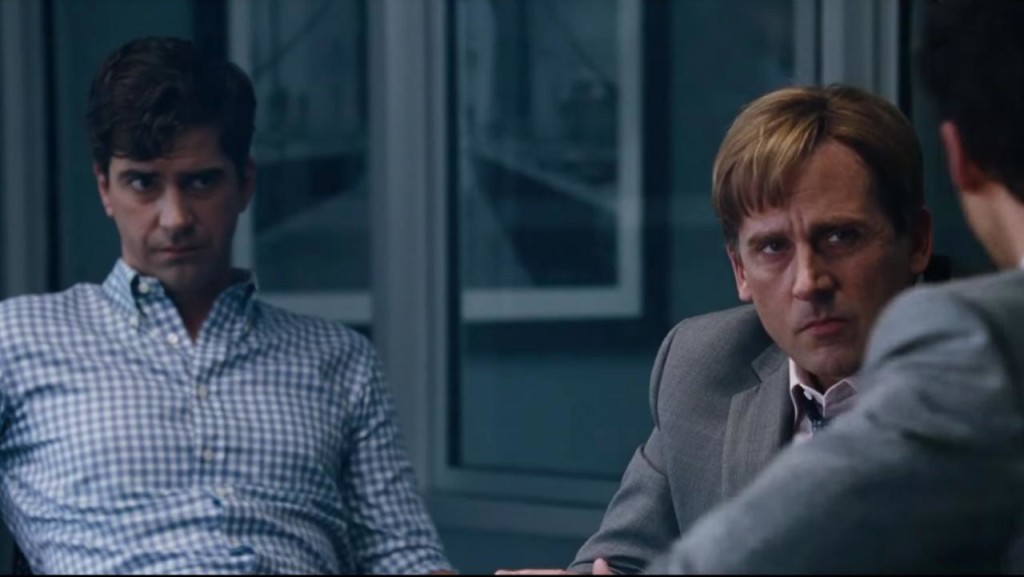
It’s history. Now we all know that the subprime mortgage scam blew up in 2007 and brought global banking to its knees by September 2008. The supremely entertaining The Big Short takes us back to before the financial collapse, when only a few quirky smarty pants saw it coming. Director Adam McKay personalizes the crisis into an irreverent character driven drama with both whodunit and ticking bomb elements. It all adds up to an exciting, funny and anger-provoking experience.
The Big Short follows the parallel stories of the not-so-merry few who discovered the worthlessness of securities comprised of bad subprime loans. There’s a San Jose doctor-turned-fund manager (Christian Bale), a renegade Wall Street hedge fund manager (Steve Carell) and a couple of boy wonder investors in Boulder, Colorado. It’s a very unlikely bunch of prospective heroes. Bale’s doctor is so socially impervious that he seems to belong somewhere on the autism spectrum. Carell’s trader attends anger management group therapy, which is not helping him a damn bit. And the Boulder kids – well this IS their first rodeo.
The real star here is Adam McKay, whose previous work has been in low-brow comedies, most notably the Ron Burgundy movies. Remember, this is the story of guys in front of their computers figuring out the current and future values of other people’s home mortgages. McKay has turned this into an edge-of-your-seat thriller. That is remarkable.
McKay’s first challenge is helping us understand all the financial gobbledygook. McKay immediately breaks the Fourth Wall, with an opportunistic Wall Street banker (Ryan Gosling) opening the movie by speaking directly to the camera and explaining how home mortgages are securitized – and it turns out that we can understand it, after all. Throughout the film, McKay keeps interrupting the action with very funny cameos, so unexpected personalities can explain various financial instruments. I’m not going to reveal them, because much of the fun is the delightful surprise. But I will say that no one has ever explained something complicated with more clarity than a pop star, an economist and a crowd in a casino when they combine to illuminate us about the “synthetic CDO”.
As cynical and iconoclastic as they are, none of our heroes can imagine the breadth of the corruption and the scale of the impending financial meltdown. As Carell’s character digs deeper, he unearths the incentives for the bankers, insurers, rating agencies and mortgage retailers to lie and cheat and defraud – all built into the system. Carell’s face is filled with a combination of disgust and terror as he connects the dots. The Big Short opens with the Mark Twain quote: “It ain’t what you don’t know that gets you into trouble. It’s what you know for sure that just ain’t so.” No truer words…
Carell and Bale are brilliant in The Big Short; both performances are awards-worthy. Gosling, Brad Pitt and Melissa Leo are all also excellent, as is Adepero Oduye (12 Years a Slave). I especially loved Jeremy Strong’s performance as Carell’s hyper intense right hand man. Strong has a particular gift for being memorable in historical dramas: Lincoln, Zero Dark Thirty, Selma and as Lee Harvey Oswald in the overlooked Parkland.
Now we know that these guys were right when everyone else – including ALL the figures of authority – were saying that they were wrong. It’s an amazing story to watch.
CORN ISLAND: exquisite and lyrical

Cinephiles must see the exquisite and lyrical Georgian drama Corn Island. If it doesn’t turn out to be the best contemporary art movie at Cinequest 2015, I’ll be shocked. Corn Island has won nineteen film festival awards and was shortlisted for this year’s Best Foreign Language Picture Oscar.
Director George Ovashvili has created a near-masterpiece of filmmaking with this unhurried yet compelling story. We learn that each spring, Georgia’s Irguri River creates temporary islands of topsoil that local farmers squat on to grow enough corn to get them through the next winter (when the island will be washed away). We see an old man choose one particular island of maybe an acre. He brings his 12- or 13-year-old orphan granddaughter to help him, and they build a shack and plant and cultivate a tiny field of corn. The audience isn’t really watching corn grow, but we are observing how the man and the granddaughter react to what happens.
The storytelling is remarkably spare. There’s not even any dialogue during the first 25 minutes – and there are probably only about 30 spoken lines in the entire movie.
The old man is played by veteran Turkish actor Ilyas Salman is a superb performance. Georgian newcomer Mariam Buturishvili plays the granddaughter. Her eyes are very expressive, so she doesn’t need to say much. We watch her show up at the island clutching her doll – and then outgrowing it.
Here’s what you need to know before seeing Corn Island: the Irguri River separates Georgia from the separatist region of Abkhazia. The main characters speak Abkhaz. The soldiers patrolling the river are variously Georgian soldiers, Abkhaz militia and Russian peacekeepers.
So settle in for a contemplative experience and just watch this story unfold through Ovashvili’s masterful lens. Corn Island plays Cinequest again today, March 1 and March 4 at Camera 12.
[MILD SPOILER ALERT: The filmmakers built their own island in a manmade lake so they could control the water. And that is the only way that they could have filmed the spectacular climax.]
Mustang: the human spirit challenged
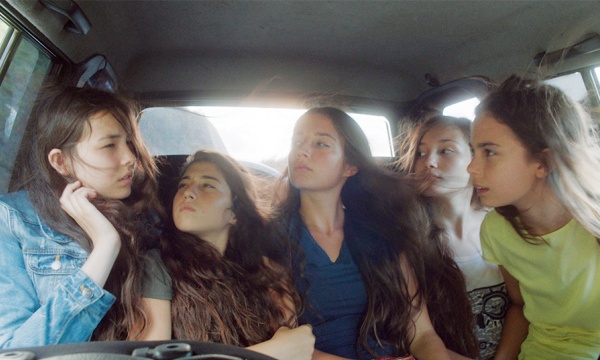
Mustang is about five exuberant Turkish teenage girls who challenge the repression of traditional culture. It’s a triumph for writer-director Deniz Gamze Ergüven, and one of the best films of the year.
The five parentless sisters are living with their uncle and aunt on the Turkish coast “a thousand kilometers from Istanbul”. They’re a high-spirited bunch, and their rowdiness – innocent by Western standards – embarrasses their uncle. Overreacting, he tries to protect the family honor by pulling them out of school, taking away their electronics, putting them in traditional dresses (evoking the dress wear of fundamentalist polygamist Mormons) and conniving to marry them off as soon as possible. The uncle turns their home into a metaphorical prison that becomes more and more literal. The girls push back, and the stakes of the struggle get very, very high.
Our viewpoint is that of youngest sister Lale (Günes Sensoy), who is a force of nature, ever watchful (often fiercely). The poster girl for indomitability, Lale is one of the great movie characters of 2015.
Mustang is a film of distilled feminism, without any first world political correctness. These are people who want to marry or not, who they want, when they want and to have some control over their lives. They want protection from abuse. That is not a high bar, but because they are female, the traditional culture keeps these basic rights from them.
Although Mustang is set and filmed in Turkey by a Turkish writer-director, the actors are Turkish and all the dialogue is Turkish, it is technically a French movie. Director Ergüven works in France and the film was financed and produced in France. In fact, it is France’s official entry for the Best Foreign Language Picture Oscar (over the Cannes winner Dheepan and the Vincent Lindon drama The Measure of a Man).
I happened to be in Sevilla, Spain for the first weekend of the Sevilla European Film Festival and saw Mustang there. I’ll be rooting for Mustang to win an Oscar.
I’LL SEE YOU IN MY DREAMS: gentle, thoughtful and altogether fresh
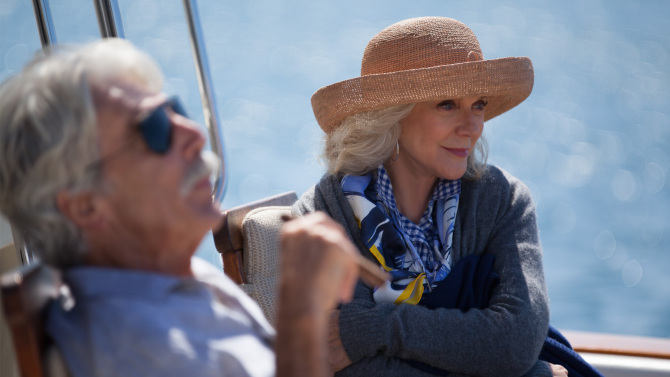
The gentle, thoughtful and altogether fresh dramedy I’ll See You in My Dreams is centered on 72-year-old Carol (Blythe Danner), a widow of 21 years living a life of benign routine. Every day, she rises at 6 AM in her modest but nicely appointed LA house, reads by the pool, hosts her gal pals from the nearby retirement community for cards and is in bed by 11 PM to watch TV with her elderly canine companion. It’s not a bad life, but it’s an unadventuresome one.
Then some things happen that give her an opportunity to choose to take some chances. In short order, she has to put down her dog and deal with an unwelcome rodent. Her friends (Rhea Perlman, June Squibb and Mary Kay Place) suggest that she try speed dating. She opens her social life, developing a friendship with a much younger man (Martin Starr – Gilfoyle in Silicon Valley) and being courted by a dashing man of her own age (Sam Elliott).
What happens is sometimes funny, sometimes sad and always authentic. This is NOT a formulaic geezer comedy, but a story about venturing outside one’s comfort zone – with all the attendant vulnerability – to seek some life rewards. Carol may be 72, but she is still at a place in her life where she can grow and be challenged. I’ll See You in My Dreams proves that coming of age films are not just for the young.
I saw I’ll See You in My Dreams at the Camera Cinema Club, at which director, editor and co-writer Brett Haley was interviewed. Haley said that he and co-writer Marc Basch wanted to “avoid the obvious joke of older people doing what younger people do”. Instead, they intended to make a movie “about love, loss and that you can’t get through life unscathed – and that’s okay”. Haley and Basch certainly succeeded in creating a film about “living life without the fear of loss”.
Danner sparkles in the role (and gets to nail a karaoke rendition of Cry Me a River). Always special when playing solid-valued but rascally guys, Elliott still retains his magnetism.
We don’t often get to see realistic movies about people in their early 70s, but I’ll See You in My Dreams respects its protagonist Carol by putting her in plausible situations. Neither farcical nor mawkish, I’ll See You in My Dreams is a surefire audience pleaser.
’71: putting the thrill in thriller

The title of the harrowing thriller ’71 refers to the tumultuous year 1971 in Northern Ireland’s Troubles. An ill-prepared unit of British soldiers gets their first taste of action in Belfast, and the rookie Private Gary Hook (Jack O’Connell) gets inadvertently left behind in hostile territory. Private Hook races around an unfamiliar and dangerous city at night. He is being hunted by his own regular troops, a shadowy and sketchy military intelligence unit, the regular IRA, the hotheaded Provisional IRA and Ulster paramilitaries – all with their own conflicting agendas. Any civilian who helps him will be at direct and lethal risk from the partisans.
In their feature debuts, director Jann Demange and cinematographer Tat Ratcliffe take us on a Wild Ride, with just a couple of chances for the audience to catch its collective breath. Importantly, the way Private Hook gets left behind amid the escalating chaos is very believable. Then there’s an exhilarating footrace through the alleys and over brick walls. Every encounter with another person is fraught with tension. Finally, there’s a long and thrilling climactic set piece in a Belfast apartment block.
O’Connell is in 90% of the shots and carries it off very well. All of the acting in ’71 is excellent. Corey McKinley is special as the toughest and most confident ten-year-old you’ll ever meet. Barry Keoghan takes the impassive stone face to a new level. And I always enjoy David Wilmot (so hilarious in The Guard).
I thank the casting and the direction for making it easy for us to tell all of these pale, ginger characters apart. To the credit of writer Gregory Burke, the beginning of the film economically sets up Private Hook as having the fitness and stamina to survive what befalls him throughout the night.
With all the different sides playing each other, the action (and the action is compelling) is set in an especially treacherous version of three-dimensional chess. Some of the double- and triple-crossing at the end is breathtaking. But what ’71 does best is putting the thrill in a thriller – keeping the audience on the edge of our seats for all 99 minutes.
THE LOOK OF SILENCE: chilling and powerful
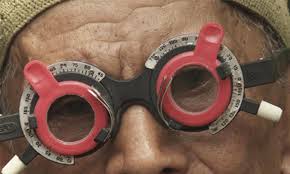
In the powerful and chilling The Look of Silence, documentarian Joshua Oppenheimer explores the aftermath of genocide in a society that has never experienced a truth and reconciliation process. This is Oppenheimer’s second masterpiece on the Indonesian genocide of 1965-66 in which regime-sponsored death squads executed over one million suspected political opponents. Today, the victims’ families live among the murderers.
The Look of Silence centers on 44-year-old optometrist Adi, as he investigates the murder of Ramli, the older brother he never knew. Earlier, Oppenheimer had filmed Ramli’s killers as they describe and act out Ramli’s savage torture, mutilation and murder. They are unrepentant and even nostalgic about their crimes. Their matter-of-fact recollections are sickening. We see Adi watching this video, trying to contain his rage and disgust. Later, Adi – in the guise of fitting them for new glasses – is able to confront those responsible. He faces the actual machete-wielding killers, the leader of the village death squad, the higher-up who ordered the killings and even one of his own relatives.
What makes this bearable to watch (and even more affecting) is meeting Adi’s family: his earthy 80-something mother, his frail and batty 103-year-old father, his giggly 7-year old daughter and his 10-year-old son. There’s plenty of humor in this warm family. But in one scene, the son receives a ridiculously twisted propaganda version of the genocide in public school.
The “Silence” in The Look of Silence is reinforced by the spare soundtrack. We often hear only “crickets” (frogs, actually).
The Look of Silence is the companion to Oppenheimer’s The Act of Killing, which made my list of Best Movies of 2013. In The Act of Killing, Oppenheimer got the unapologetic killers to re-enact their atrocities for the camera – even relishing their deeds. The Act of Killing contains some of the most bizarre moments in any documentary EVER, including a cross-dressing mass murderer and a staged Bollywood-like musical number of Born Free, complete with dancing-girls in front of a waterfall, in which the garotted dead reappear to thank the killers for sending them on to the afterlife. The Act of Killing is more of a jaw-dropper. The Look of Silence – because it is more personal, is more powerful.
The Look of Silence stands alone – you can fully appreciate it without having seen The Act of Killing. But what I wrote about The Act of Killing is true for both films: “hypnotically compelling – you can’t believe what’s on the screen, can’t believe that you’re still watching it and can’t stop watching”.
I saw The Look of Silence at the San Francisco International Film Festival before its limited theatrical release slated for July 17. It’s one of the best films of 2015.

2 thoughts on “Best Movies of 2015”